A blooming waterlily inspired me to blog today after an absence of 2 years! It confirmed a truth that has been demonstrated to me repeatedly this past year: the “life force” is everywhere and persists with all the power of the universe. I have seen it in every plant that pops up in a tiny crack in the sidewalk or a fern that grows in the side of a ravine. It was in my 90-year-old Dad’s eyes when he was seriously ill this spring, only to recover to enjoy his great-granddaughter Rachel. While traveling in Alaska recently, I felt this life force in every animal and plant that has adapted to survive the extreme climate. And on this Yom Kippur, for which I’ve done nothing observant, I am grateful for the lesson that was reinforced by a flower on the cool autumn day that I picked the last weak remnants of my vegetable garden.
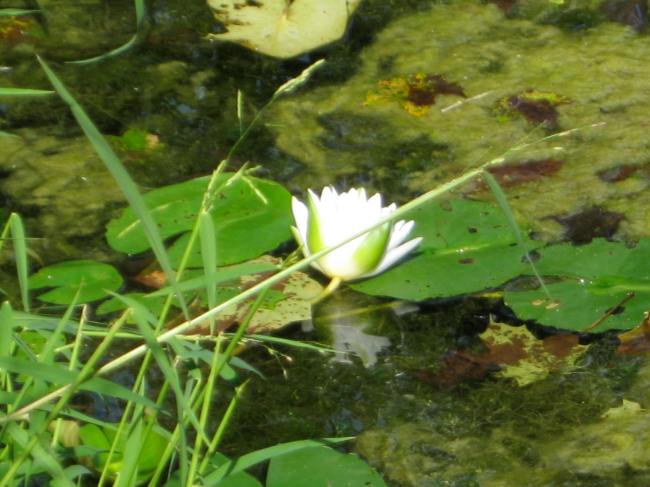
For those of you who haven’t visited us at Frog & Toad in a while, you will see that we have made some adaptations, too. A few years ago we lost the magnificent Weeping Willow that stood by the pond. At first we kept the tree stump about 3 ft. high, thinking we could make something meaningful out of it. One year we planted flowers and herbs in the crevices but the deer ate them. In the way the “life force” persists, the tree stump kept sending off willow shoots that, we finally realized, we could root and later plant to replace their ancestor. Now we have 3 saplings growing on our farm. That is what I call Willowpower!

We have done some construction, too. Ron built me a wood-duck nesting box that will be all ready when they stop by next spring. In the meantime, we have had some very confused bluebirds nest in it.
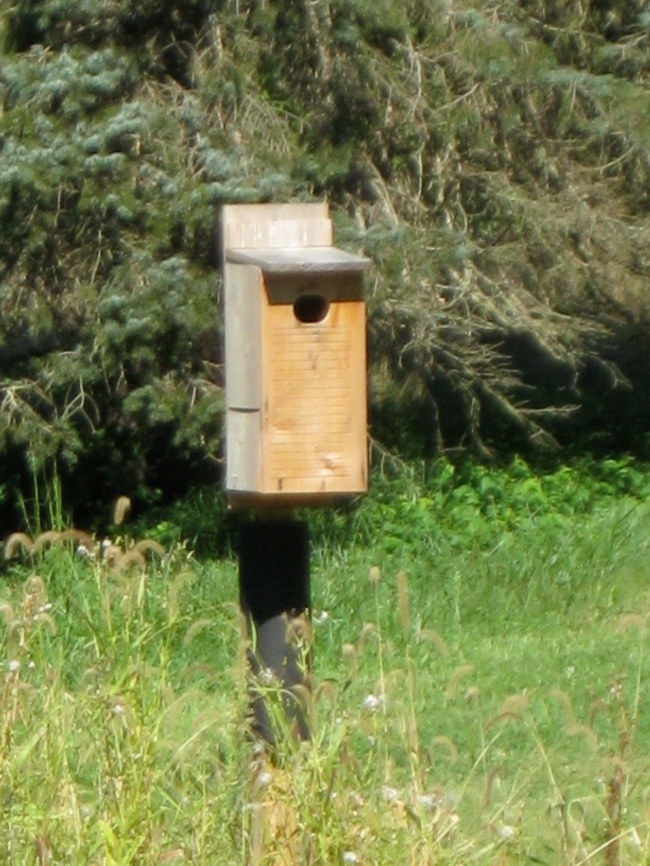
Bluebirds abound here! They also made a home in a decorative, hand-painted birdhouse that my artist/sister Susan gave us when we first moved to F & T Farm. I had just hung it to decorate the pergola we added last year. Since then, it has had almost constant residents.
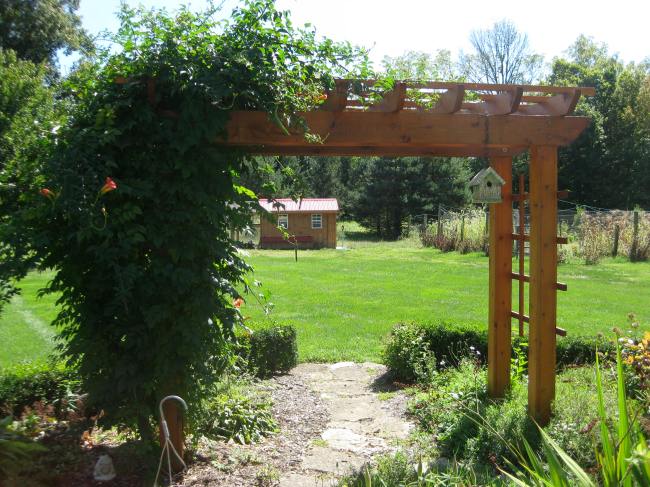
Adirondack chairs invite us to watch the pond and relax, which we rarely do because…………..
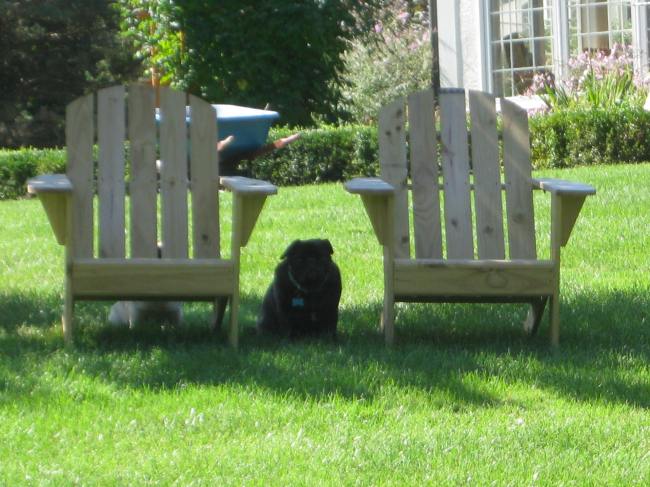

I have saved the best for last. CHICKENS!

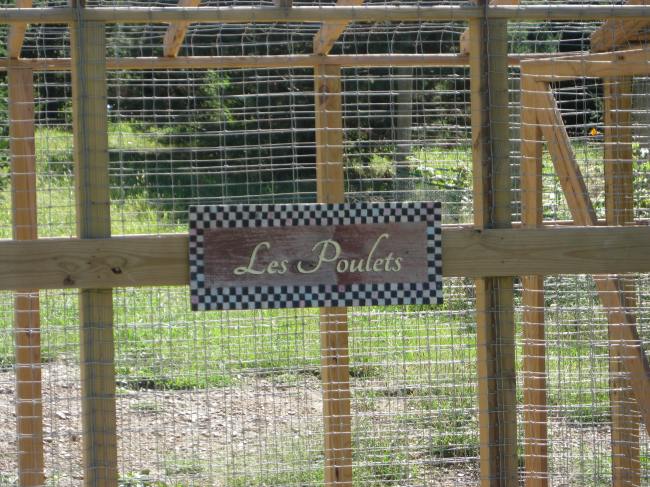

Yetta and Rosy

Faye

Dearie coming down the chute
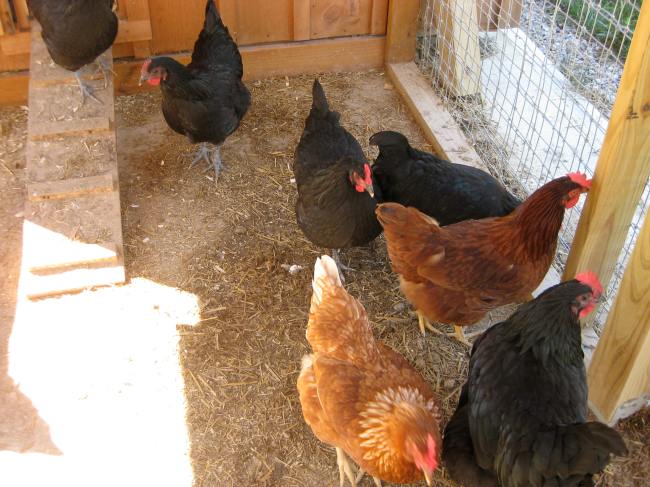
Twelve in all including: Goldie, Dearie, Faye, Minnie, Jane, Rosie, Tootsie, Gussie, Fanny, Maxine and Yetta. Some of the divas haven’t selected a name. All are laying hens that we got the day they were hatched (April 23) at Meyer Hatchery in Polk, OH. We found the first egg three weeks ago and today I found four. It won’t be long before they are all mature, when we can expect about a dozen eggs a day! (If you want to get on the “free eggs” list, send a comment.)
And the ladies are very lucky to have the best protection in the world from the myriad predators.

VINNY AND LOLA aka Guardpugs
If you ever doubt that the “life force” is unfathomably strong, just spend some time around pecking, running, clucking, flapping hens who lay eggs every single day without a rooster in the house!











































